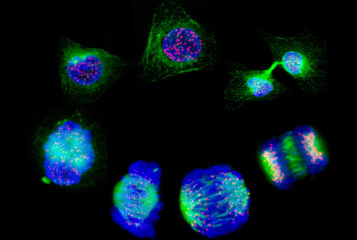Regulatory protein boosts CAR T-cell cancer treatment
Changing the expression of a specific protein can significantly improve the performance of immune-cell-based cancer therapies, according to two separate studies published in Nature...
Clustered regularly-interspaced short palindromic repeats.
Naturally occurring in bacteria, segments of DNA used for defence against pathogens.
Used by humans in genome editing: the CRISPR/Cas system used to edit DNA at specific locations in the genome.

by Yan Lau
Changing the expression of a specific protein can significantly improve the performance of immune-cell-based cancer therapies, according to two separate studies published in Nature...

A clinical trial for a CRISPR-based therapy for high-cholesterol has been suspended after a participant developed unforeseen side effects...


A genome editing technique that allows researchers to test thousands of different mutations that might affect how cancer cells behave has been developed...

by Jake Knox
An area in the human and mouse genome has been found to contain DNA that controls genes involved in anxiety...

by BioNews

by BioNews

A single dose of a CRISPR-based gene therapy could cure inflammation in people affected by a rare condition that causes life-threatening swelling attacks, according to a new clinical trial...


by Yan Lau
A genome-edited pig liver effectively filtered blood in a brain-dead man for three days, showcasing a potential temporary solution for acute liver failure...
BioNews, published by the Progress Educational Trust (PET), provides news and comment on genetics, assisted conception, embryo/stem cell research and related areas.

